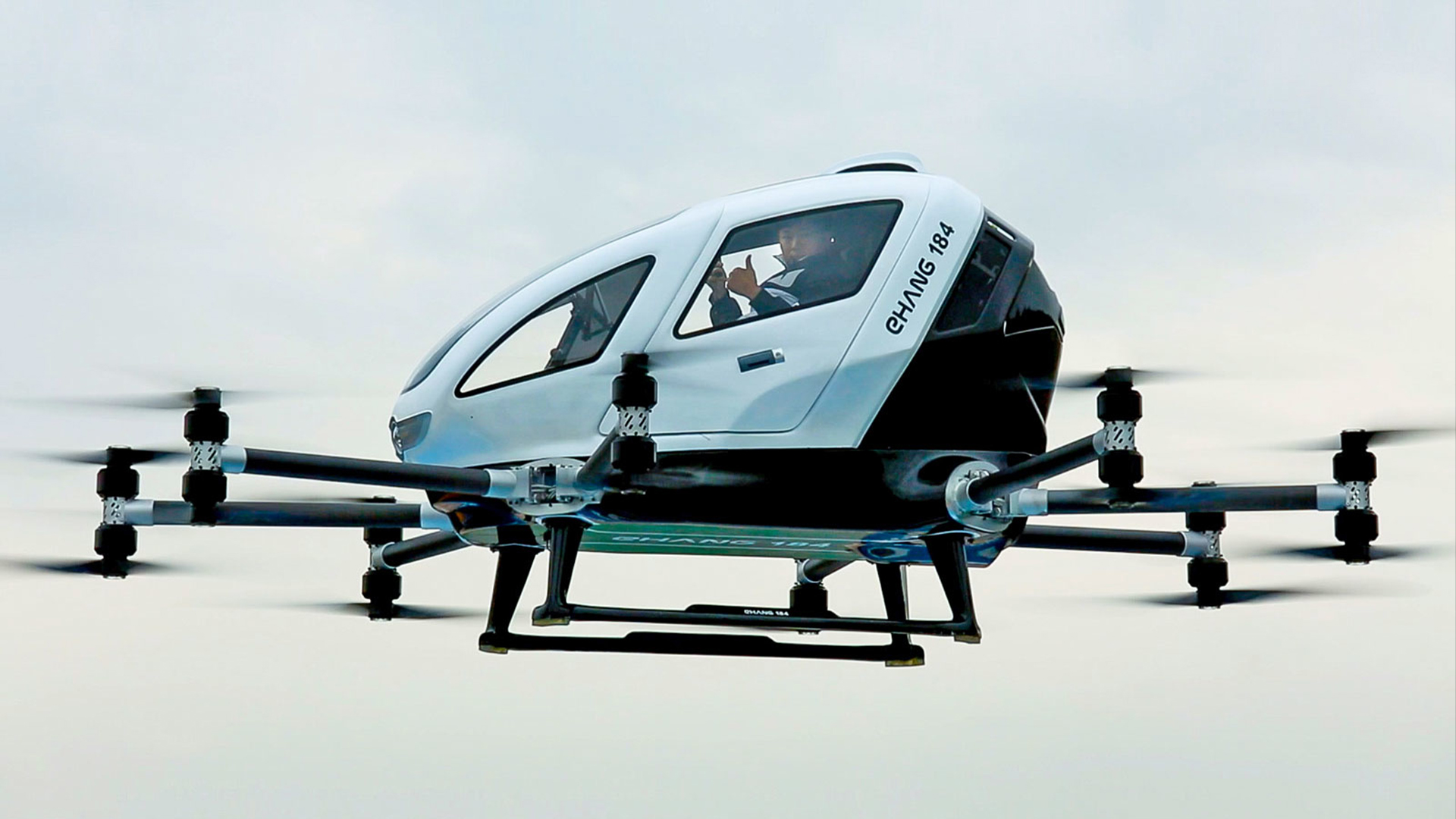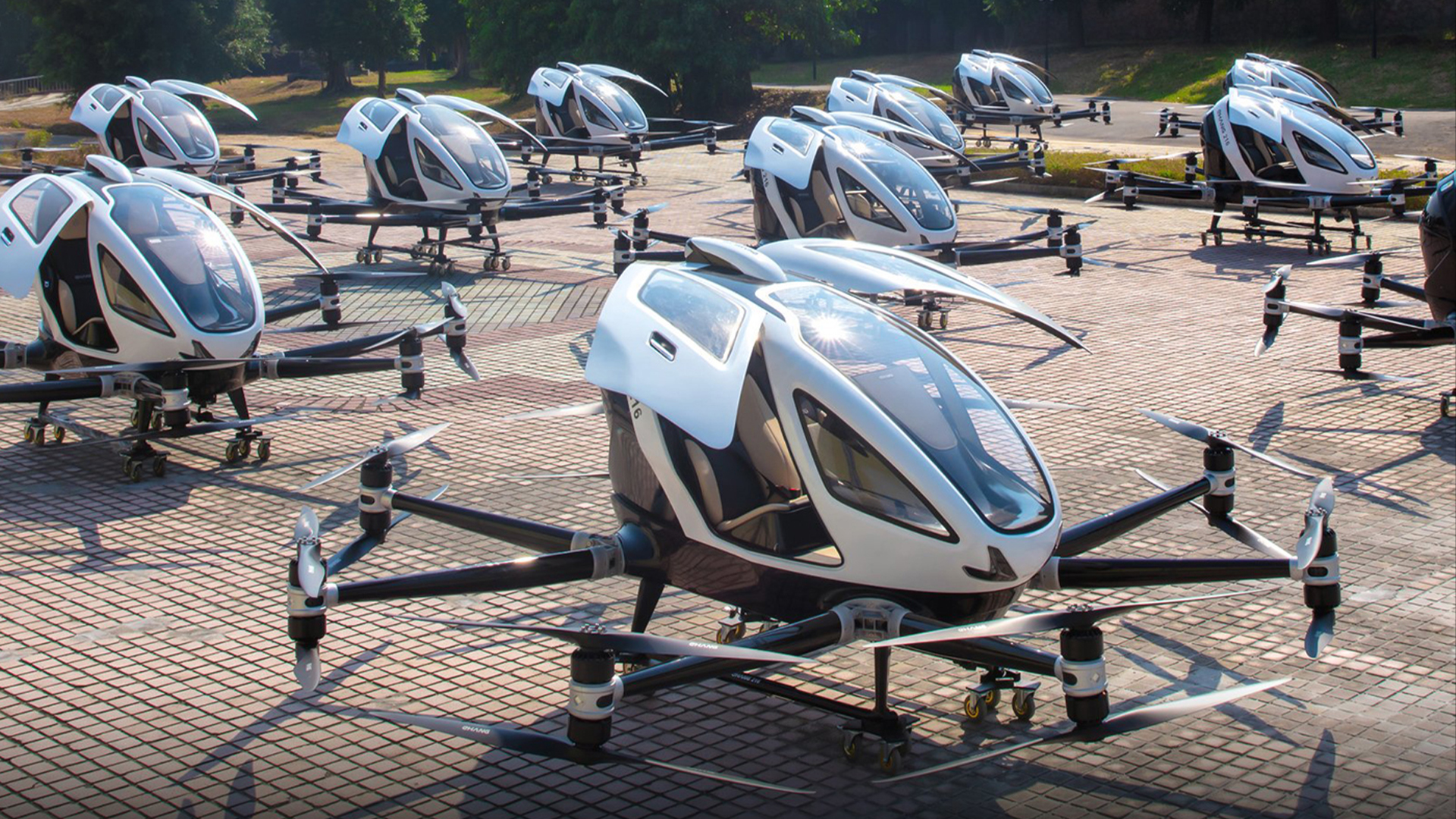China green-lights mass production of autonomous flying taxis — with commercial flights set for 2025
The EHang EH216-S autonomous flying taxi is the first eVTOL ready for mass production and could lead the way for flying cars around the world.

Autonomous flying taxis could soon be a reality after vehicle manufacturer EHang obtained the world’s first production certificate to manufacture them in China.
EHang's EH216-S "passenger-carrying pilotless" electric vertical takeoff and landing (eVTOL) vehicle received clearance to be mass-produced from the Civil Aviation Administration of China (CAAC), company representatives announced in a statement on April 7.
Many companies manufacture eVTOLs, but they have so far only been developed as prototypes for test flights. This decision represents a notable step towards introducing eVTOLs commercially.
"Our vision is to introduce safe and reliable pilotless eVTOL aircraft to the global market, thereby offering safe, autonomous and eco-friendly air mobility services to everyone," Huazhi Hu, CEO of EHang, said in the statement.
Related: Flying car designed to hop across the Philippines' 7,000 islands coming this year
The production certificate gives EHang the go-ahead to manufacture flying cars, encompassing the sourcing of raw materials, supply chain management, quality control and testing, in addition to after-sales repair and maintenance — all verified by comprehensive reviews and inspections.
Taking to the skies
First announced in 2018, the EHang EH216-S is a small, fully-electric VTOL craft with a carbon fiber fuselage and 16 propellers powered by 16 motors. It has a cruise speed of 62 mph (100 km/h) and a maximum altitude of around 10,000 feet (3,000 meters).
Get the world’s most fascinating discoveries delivered straight to your inbox.
Designed for passenger transport, it can hold two occupants and has an autonomic driving system that removes the need for a pilot. EHang claims the VTOL has been tested numerous times with both crewed and uncrewed flights. It isn't the company's first model — it follows the EHang 184 "passenger drone" that debuted in 2016.
The company hopes the EHang EH216-S will function in areas such as air taxi services, aerial tourism, airport shuttles and cross-island transportation.
Large-scale production of the EH216-S represents an important milestone in making unmanned eVTOLs and similar aircraft a reality. It's the first eVTOL to have been granted such certification, which in turn could make China the first nation to make flying taxis a service that people can use.
While the EH216-S now has approval for mass production, the CAAC issued the Green Aviation Manufacturing Development Outline (2023-2035) in October 2023, which offers guidance on putting a pilot-operated eVTOL in the skies by 2025 and fully autonomous services on a large scale by 2035, including the need to establish practical regulations and insurance plans for flying cars.
In contrast, the U.S.'s Advanced Air Mobility (AAM) Implementation Plan has targeted 2028 as the year that eVTOLs will fly commercially for the first time, with appropriate regulation and certification governing their safe manufacturing and use.
With this in mind, China could steal the march on the U.S. in terms of making — or at least testing — eVTOLs at a commercial level.
Roland Moore-Colyer is a freelance writer for Live Science and managing editor at consumer tech publication TechRadar, running the Mobile Computing vertical. At TechRadar, one of the U.K. and U.S.’ largest consumer technology websites, he focuses on smartphones and tablets. But beyond that, he taps into more than a decade of writing experience to bring people stories that cover electric vehicles (EVs), the evolution and practical use of artificial intelligence (AI), mixed reality products and use cases, and the evolution of computing both on a macro level and from a consumer angle.





